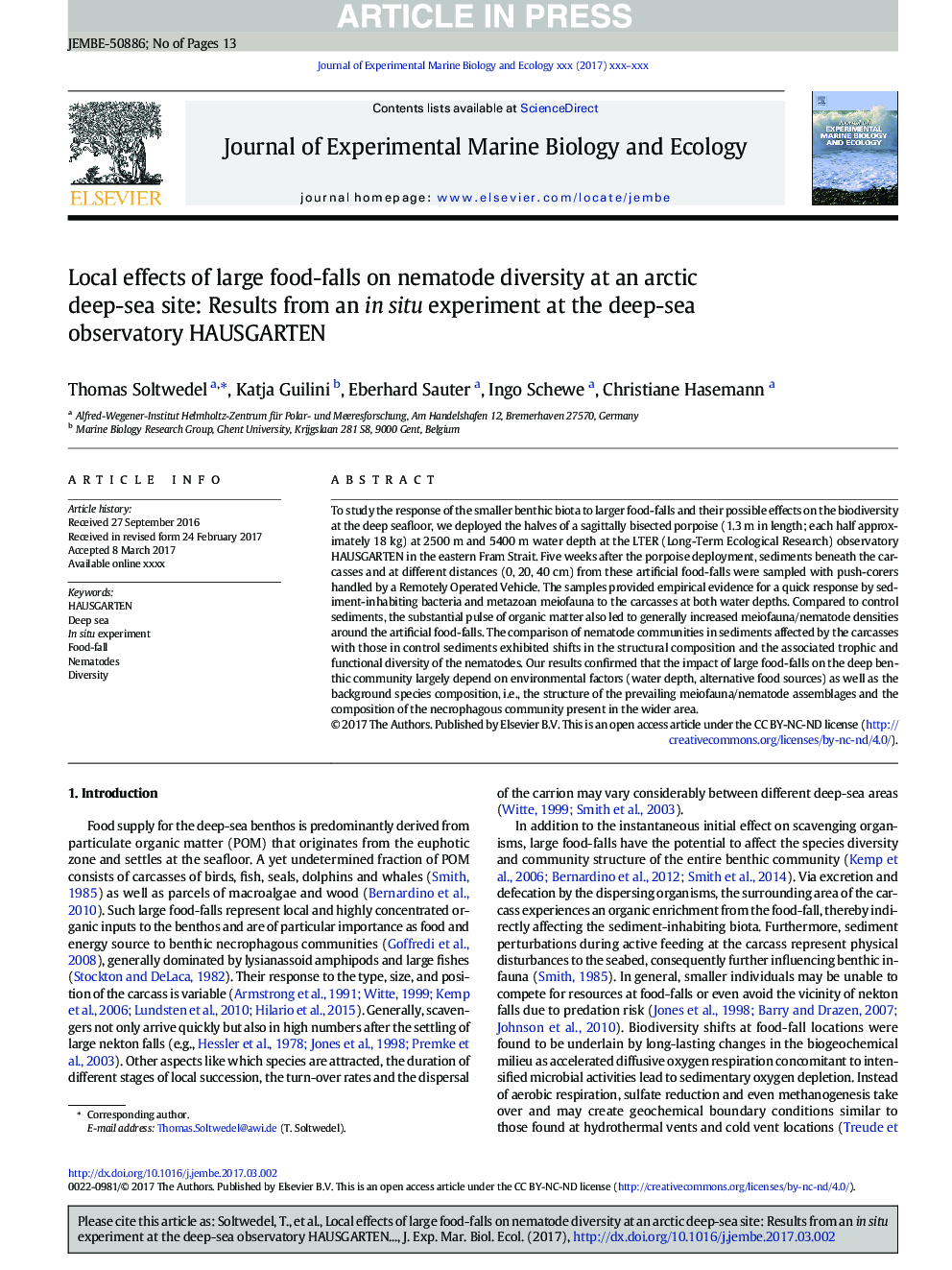| Article ID | Journal | Published Year | Pages | File Type |
|---|---|---|---|---|
| 8848960 | Journal of Experimental Marine Biology and Ecology | 2018 | 13 Pages |
Abstract
To study the response of the smaller benthic biota to larger food-falls and their possible effects on the biodiversity at the deep seafloor, we deployed the halves of a sagittally bisected porpoise (1.3Â m in length; each half approximately 18Â kg) at 2500Â m and 5400Â m water depth at the LTER (Long-Term Ecological Research) observatory HAUSGARTEN in the eastern Fram Strait. Five weeks after the porpoise deployment, sediments beneath the carcasses and at different distances (0, 20, 40Â cm) from these artificial food-falls were sampled with push-corers handled by a Remotely Operated Vehicle. The samples provided empirical evidence for a quick response by sediment-inhabiting bacteria and metazoan meiofauna to the carcasses at both water depths. Compared to control sediments, the substantial pulse of organic matter also led to generally increased meiofauna/nematode densities around the artificial food-falls. The comparison of nematode communities in sediments affected by the carcasses with those in control sediments exhibited shifts in the structural composition and the associated trophic and functional diversity of the nematodes. Our results confirmed that the impact of large food-falls on the deep benthic community largely depend on environmental factors (water depth, alternative food sources) as well as the background species composition, i.e., the structure of the prevailing meiofauna/nematode assemblages and the composition of the necrophagous community present in the wider area.
Related Topics
Life Sciences
Agricultural and Biological Sciences
Aquatic Science
Authors
Thomas Soltwedel, Katja Guilini, Eberhard Sauter, Ingo Schewe, Christiane Hasemann,
